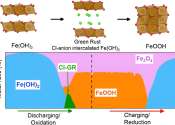How to design materials with reprogrammable shape and function
Metamaterials—materials whose function is determined by structure, not composition—have been designed to bend light and sound, transform from soft to stiff, and even dampen seismic waves from earthquakes. But each of ...
Jan 18, 2017
0
249









